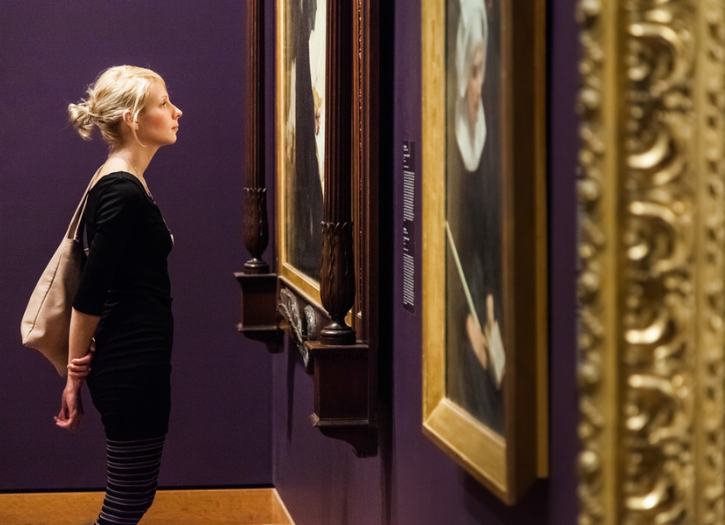The portraits of influential figures throughout history often provide more than a mere visual representation; they offer a profound insight into the individual’s life, their status, and the era they lived in. Among such illuminating artworks, the portrait of the young Archduke Karl Ludwig stands as a remarkable testament to a bygone epoch.
Archduke Karl Ludwig of Austria, born on July 30, 1833, was a member of the House of Habsburg and the brother of Franz Joseph I of Austria. His life was intricately woven into the rich tapestry of Austrian history, marked by a period of significant socio-political change.
It is in this context that the portrait of the young Archduke offers a fascinating glimpse into the man behind the title and his world.
Historical Context
The portrait of the young Archduke Karl Ludwig was created during a time of significant political and cultural upheaval. As a member of the House of Habsburg, a family that held significant power in Europe, Karl Ludwig was a crucial figure in Austria during a period marked by revolutions, wars, and shifts in power structures.
The socio-political environment of the time had a profound influence on the creation of the portrait, shaping the way the Archduke was represented and perceived.
Artistic Analysis
The artist who painted the portrait of Archduke Karl Ludwig skillfully used various artistic techniques and styles to bring the subject to life. The use of color and form in the portrait was meticulous, with the artist paying attention to minute details to create a vivid and realistic depiction.
Symbolism and iconography also play an important role in the portrait, providing deeper insight into the Archduke’s persona, status, and the era he lived in.
Examination of Archduke Karl Ludwig’s Image
The portrait is more than just an artistic rendition of his physical attributes; it serves as a visual narrative that embodies his personal traits, social position, and the essence of his political prowess.
- Analysis of Archduke’s Physical Depiction: The artist has captured Karl Ludwig with remarkable realism, conveying not just his youthful features but also his dignified aura. His attire, adorned with symbols of his high-ranking status, aligns with the fashion of the Austrian nobility during the period. He is depicted in elaborate clothing, with a discernible military influence, signifying his position within the Austrian Imperial family and the Habsburg dynasty.
- Reflection of His Personal Characteristics and Personality: Beyond the tangible, the portrait gives viewers a glimpse into Karl Ludwig’s character. His posture is upright, confident, depicting a person of responsibility and authority. The expression on his face is calm and composed, yet there’s an intensity in his eyes that hints at the rigorous political and social demands of his role. This balance between tranquility and intensity reflects the duality of his personality – a calm demeanor in the face of challenges, and a resolute spirit required of his station.
- The Representation of His Social Status and Political Power: Every detail in the portrait symbolizes the Archduke’s elevated social status and political power. His attire, the quality of the fabrics, the intricate embellishments, all serve to highlight his aristocratic status. The background, possibly depicting a corner of a palace or a regal edifice, further accentuates his royal lineage. The inclusion of a crown, scepter, or coat of arms, if any, would offer further evidence of his powerful position.
Interpretation and Critique
Reactions to the portrait have varied since its creation. Contemporary responses reflected the sentiments and attitudes of the time, often influenced by political and social contexts.
Modern interpretations and critiques provide different perspectives, informed by current understanding and research. The portrait’s influence and legacy in art history are also significant, offering insight into the period’s artistic trends and techniques.
The Portrait’s Role in Understanding Karl Ludwig’s Life and Time
The portrait of the young Archduke Karl Ludwig serves as a potent tool for historians, art scholars, and enthusiasts to delve deeper into the persona of the Archduke and the historical epoch in which he lived.
The portrait, through its meticulous representation of Karl Ludwig, provides an intimate glimpse into his personal and public life. Details from his attire to the demeanor he carries reflect the prestige and responsibilities of his role within the Austrian Imperial family.
It captures the spirit of a young man groomed for leadership, hinting at the aristocratic lifestyle he led and the duties he was bound to fulfill. In many ways, the portrait serves as a silent narrative of Karl Ludwig’s life, encapsulating his persona in the frame of art.
Aside from its aesthetic value, the portrait serves as an important historical document. It offers a tangible link to the past, providing critical insights into the fashion, art, cultural norms, and socio-political atmosphere of the time.
As an artifact from the era of the House of Habsburg, the portrait helps to illustrate the regality and ceremonial grandeur associated with the dynasty, thereby enhancing our understanding of the historical period.
The portrait of Archduke Karl Ludwig plays a pivotal role in understanding the historical period he lived in. It acts as a gateway to the era’s artistic, cultural, and political landscape.
By dissecting elements in the portrait, historians and scholars can infer details about the time, such as the prevalent artistic styles, the significance of the House of Habsburg, and the social hierarchy of the time. Therefore, it serves as an invaluable resource that aids in painting a more comprehensive and nuanced picture of the era.
Conclusion
The portrait of the young Archduke Karl Ludwig is a captivating piece of art that transcends the boundaries of aesthetic appreciation. It offers significant insight into the life of the Archduke and the historical period he lived in.
The portrait, with its rich details and artistic mastery, continues to inform and inspire, shaping our understanding of Karl Ludwig and his place in Austrian history. It stands as a testament to the power of art in capturing and preserving the intricacies of individual lives and historical periods.
Photo Credit: Deposit Photos







Add Comment
You must be logged in to post a comment.